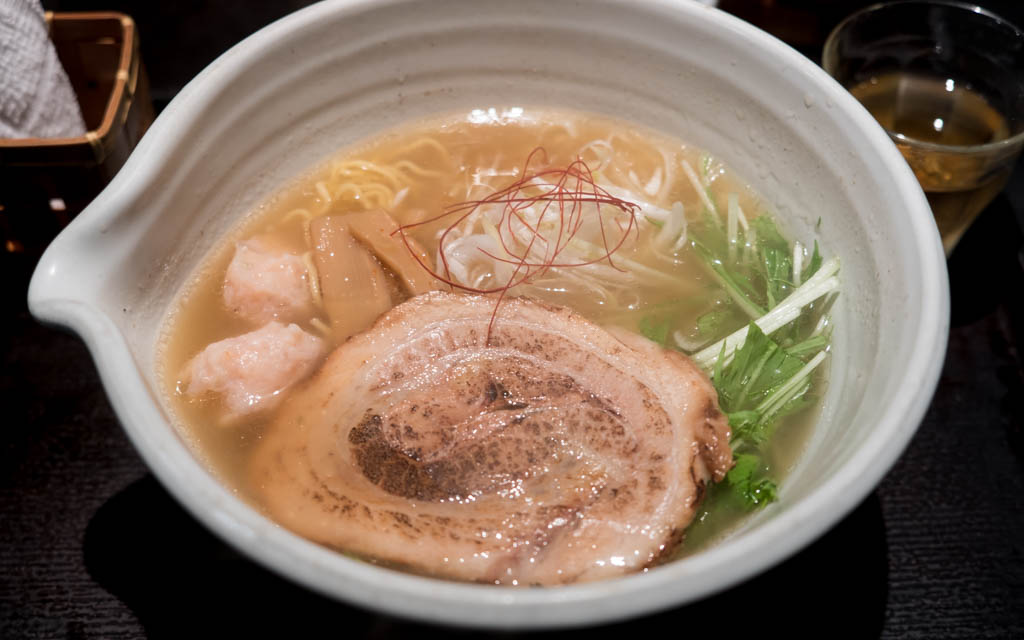灰汁中華 丿貫福富町本店
There are quite a few niboshisoba (煮干そば) around these days. So many so that it may be time to further categorize the style. You have thinner styles, like Shibata, and thicker styles like Ibuki and Itto. You have the mega-thick style, often called cement ramen like Tsukihi. Then, for some reason, you have places that incorporate crab into their niboshisoba.
And for some reason, these crab-centric spots lean toward quail eggs over the standard chicken egg. Seriously, this is the third crab-niboshi-quail egg spot I've seen recently.
I had to try the rock crab ramen, made with crabs imported from Canada. Luckily, I went with a friend so we could try the standard niboshi as well. By the way, the menu clearly states that first-time customers should probably get the niboshisoba, as it is the shop's claim to fame. This niboshisoba is always made with a different blend of dried fish. On this day it was two kinds of anchovy (片口 and 潤目) and mackerel (鯵). Niboshi can really be any kind of dried seafood, though the anchovy reigns supreme.
Not everyone loves the niboshi styles as they tend to be a bit fishy and bitter. The crab was a more mellow slurp. Really enjoyable.
Not everyone loves the niboshi styles as they tend to be a bit fishy and bitter. The crab was a more mellow slurp. Really enjoyable.
I didn't try the limited bowl, made with hokkigai, a kind of surf clam. Turns out, Hechikan is constantly doing different limited bowls. Scallop, tuna, and lobster are all recent limited gentei bowls. I always think if I wasn't so obsessed with searching out new spots I would just visit the same five ramen shops and try all of their limited bowls for the duration of my life in Japan.
























































